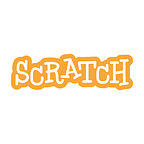Inside of the Scratch Education Collaborative: 3 things we learned on our trip to Kenya
By: Valerie I
This post is the second in a series highlighting the work of the Scratch Education Collaborative (SEC). This series will introduce you to some core principles, people, and practices that influence how we think about creative, collaborative learning.
The Scratch Education Collaborative (SEC) is an initiative that supports and engages organizations from around the world in a two-year, collaborative cohort experience to strengthen their organization’s commitment to, and implementation of, equitable approaches to creative coding using Scratch and ScratchJr.
Since launching in 2021, the SEC team and participating organizations have relied primarily on digital methods of communication to foster a close-knit, international community. These digital connections have helped the SEC network increase to 130 participating organizations from several countries. Through the Collaborative, leaders in the creative learning sector from around the world meet regularly to exchange resources, insights, and inspiration as they work to generate more accessible pathways to creative coding.
Last year, we met some of our SEC participants in Kenya for the first time.
On this trip, we workshopped with Scratch educators from the STEM Impact Center Kenya, KPLAY/IREX, STEAMLabs Africa, and Youth For Technology Foundation to deepen our understanding of some of the sociocultural barriers to creative learning. During these sessions, we also explored ways to better support these groups in their efforts to adapt and localize similar experiences for their respective communities. Members from the Centre for Mathematics, Science and Technology Education in Africa (CEMESTEA), a STEM teacher training program based in Nairobi, and the Kenya Institute of Curriculum Development (KICD) also participated in providing their unique perspectives as members of government education organizations.
Since the inception of Scratch, the practices of our partners, educators, and leaders have greatly informed our work. Here are some ways that our time with this set of organizations inspired us to consider new approaches to creative learning.
Community comes in many forms:
For 15 years, Scratch’s online community has connected over 40 million incredible users through play.
The infinite possibilities that the online community creates for Scratchers to collaborate, remix, and share are invaluable. But in some regions, the digital community is not as accessible as in others due to a wide range of barriers. In these cases, affected regions use the Scratch offline editor, where young people can get the benefit of coding but miss out on the opportunity to build a global community of peers.
During our trip to Kenya, we observed localization in action as presenters in Mombasa tailored their examples and projects to their audience of over 60 educators from diverse schools, many of whom had no internet access.
As an organization, these environments encouraged us to think more critically about how we can develop a more nuanced understanding of building community offline.
There is a need to scaffold play:
The SEC has taught us that collaboration for adults can look much different than for young people. Our time in Kenya reinforced this as we observed how children and adults from local communities approach tinkering and failing forward as they create.
For young people, playing is where the magic of learning begins. For years, Scratchers have approached sophisticated coding concepts with zest and imagination. The children that we encountered in Kenya housed the same spark. In the schools we visited, we noticed that children were particularly eager to help one another through concepts and share ideas freely, while educators championed their collective learning.
As adults, our approach to creating tends to be more reformed, so blank canvases can feel intimidating. Through our collaborations, we’ve seen how these feelings can influence one’s approach to workshops and other communal experiences. Like many of the adult participants in our workshop experiences, we noticed adults in Kenya initially approached the workshops with outcome-driven agendas. Noticing this, we decided to scaffold community building and a sense of belonging while modeling creative learning as a pedagogical approach to encourage adults to open up, play and share.
Witnessing these disparate approaches to play challenged us to think about how we can better scaffold and create experiences for all learners to become comfortable with playing and creating without being fearful that they are doing something wrong.
Maintaining an equitable approach remains crucial:
An equitable approach to creative coding ensures that all young people have free opportunities to imagine, create, and share their ideas.
We understand that a large part of this approach begins with intentional collaboration that invites diverse perspectives to the conversation. These different perspectives provide insight into cultural context and ways to collaborate.
By having the opportunity to request feedback and meet public school teachers from these regions in real-time, we were reminded of just how vital these perspectives are when working to improve the Scratch platform for a global audience.
As we advance in our work, these experiences will continue to inform our work and approach to increasing access to creative coding.
The SEC is just one of many building blocks Scratch uses to foster community and generate intentional and equitable pathways to creative learning. You can learn more about the SEC here.
We are now accepting applications for our new SEC cohort! Are you interested in joining? Click here to apply.
Follow us on Twitter @Scratch for current updates on the SEC.
